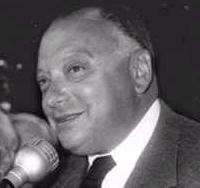.Davy, Sir Humphry (1778-1829), renowned British chemist, best known for his experiments in electrochemistry and for his invention of a miner's safety lamp.
Davy was born on December 17, 1778, in Penzance, Cornwall, England. In 1798 he began experiments on the medicinal properties of gases, during which he discovered the anesthetic effects of nitrous oxide (laughing gas). Davy was appointed assistant lecturer in chemistry at the newly founded Royal Institution in London in 1801 and the following year became professor of chemistry there.
During his early years at the Royal Institution, Davy started his investigations of the effects of electricity on chemical compounds. In 1807 he received the Napoleon Prize from the Institut de France for the theoretical and practical work begun the year before. He then constructed the largest battery ever built, with over 250 cells, and passed a strong electric current through solutions of various compounds suspected of containing undiscovered elements. Davy quickly isolated the elements potassium and sodium by this electrolytic method. He also prepared calcium by the same method. In later, unrelated experiments, he discovered boron and proved that the diamond is composed of carbon. Davy also showed that the so-called rare earths are oxides of metals rather than elements. His experiments with acids indicated that hydrogen, not oxygen, causes the characteristics of acids. Davy also made notable discoveries in heat.
In the field of applied science, Davy invented a safety lamp for miners in 1815. For this and for related research, he received the gold and the silver Rumford medals from the Royal Society. In 1823 he suggested a method of preventing the corrosion of the copper bottoms of ships by means of zinc and iron sheathing. He was knighted in 1812 and raised to a baronetcy in 1818. In 1820 he became president of the Royal Society. Davy died on May 29, 1829, in Geneva.
Among his writings are Elements of Chemical Philosophy (1812) and Elements of Agricultural Chemistry (1813).

